16 clever loft storage ideas to make the most of your attic space
With the right loft storage ideas you can totally transform any wasted space in your roof into an area that is useful for all the family
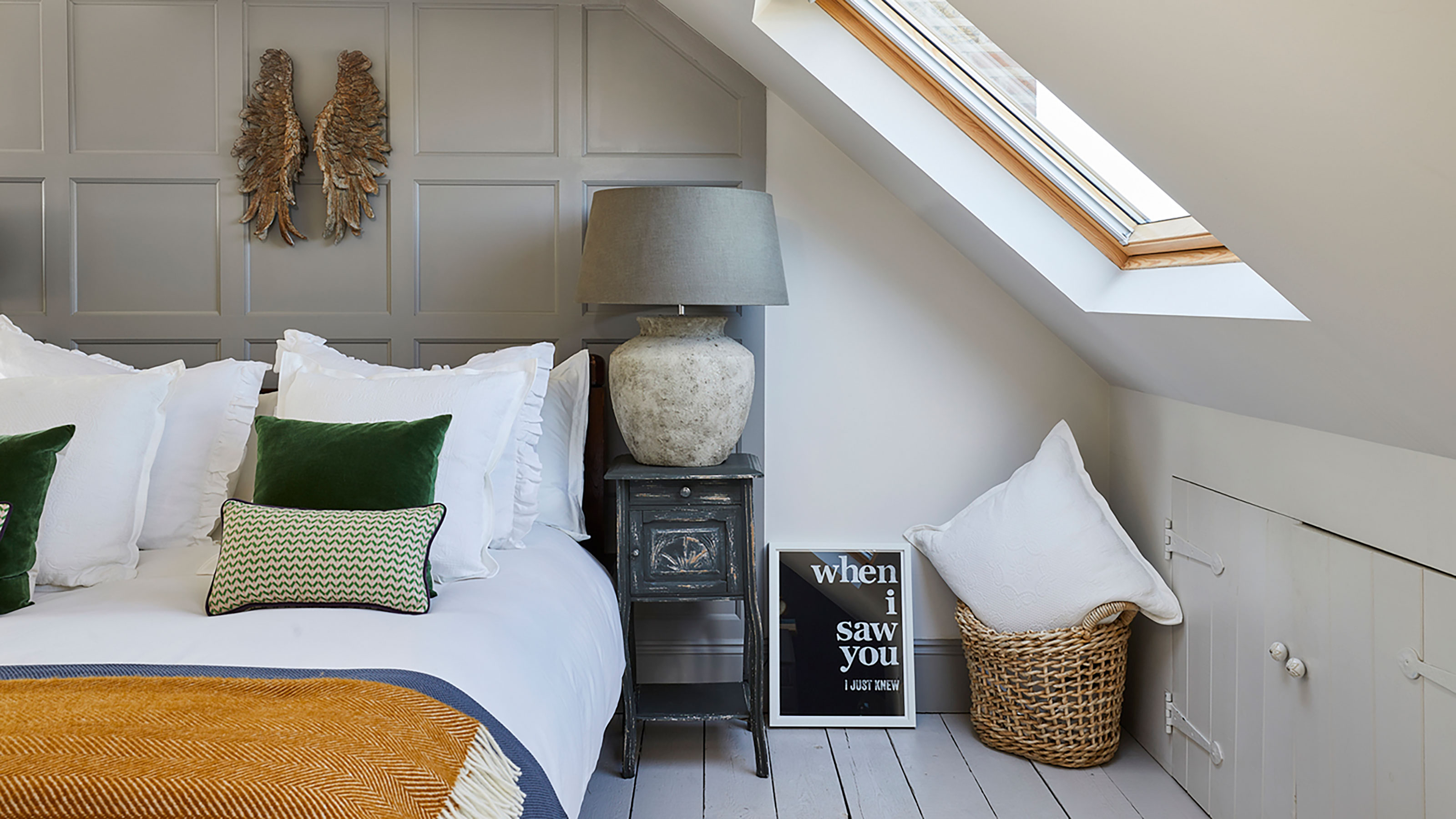
Brilliant loft storage ideas can really unlock the potential of the space you have available in your attic — whether you plan on using the area as somewhere to stow away those lesser-used items, such as the Christmas decorations, or have plans to convert the space into a handy extra room.
While your loft conversion ideas will obviously very much depend on the size of the space you have available, as well as your roof type and budget, there will still be a storage solution suitable for you, which is why it is important to take a very tailored approach to this aspect of your home.
In this round-up, we have included all kinds ideas, from simple ways to keep your belongings protected from moisture and dirt to bespoke solutions that make the most of your individual space.
Which loft storage ideas do you need?
The first question you need to ask yourself is what you need to store in your loft and how you want the space as a whole to work. For example, if you simply want your loft to provide somewhere for all those bits and bobs that you rarely need, you will be looking at something quite different to those carrying out full loft conversions with the intention of creating habitable living space.
Just as when planning out any kind of storage space within you home, begin by thinking how much space you actually need to keep your belongings safe, clean and dry and do think about how often you will need to gain access to them too.
1. Make use of under eaves space
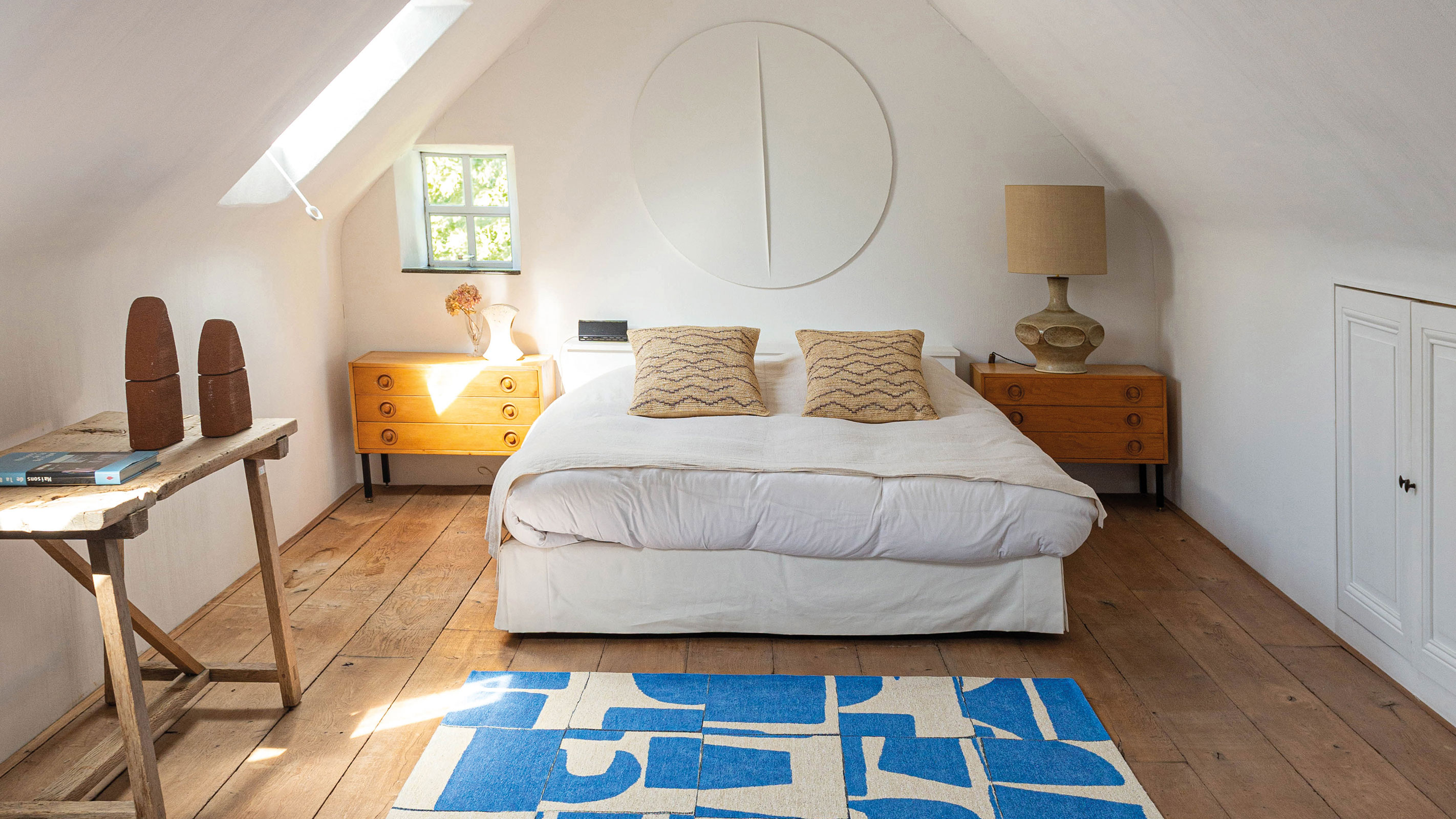
The eaves are the space under the sloping section of roof in a loft and are often wasted space — unless, of course, you incorporate some useful storage here. Locating storage under the eaves makes so much sense given that they are often not useable for much else.
Building in cupboards and shelving here usually provides a really good amount of space for stowing items away and can also be a handy way to include some clothes storage for those after bedroom loft conversion ideas, without taking up valuable floor space.
In this cosy loft bedroom, smart cupboard doors conceal an expanse of storage while leaving plenty of room for manoeuvring around the bed.
2. Opt for a tailored solution
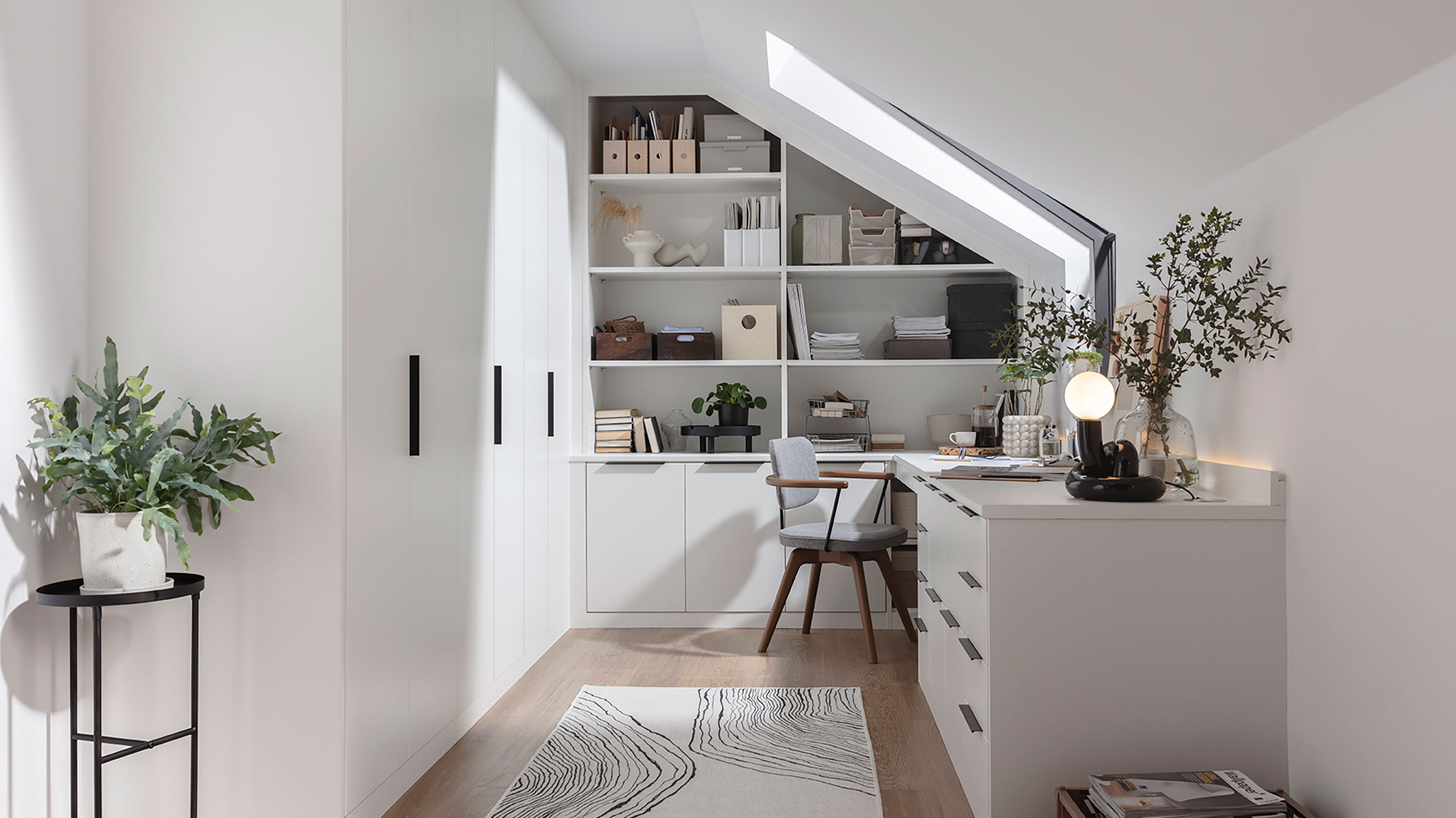
Loft conversions usually feature some pretty tricky angles and awkward spaces, but this doesn't mean you should give up on using them for storage — although a tailored approach can often make better use of them than trying to squeeze in a one-size-fits-all solution.
There are many companies out there specialising in designing fitted storage furniture that will slot neatly into rooms with sloping ceilings without encroaching on floor space.
The cupboards, shelving and units here are from Sharps' Manhattan Loft range.
3. Create storage without compromising on insulation
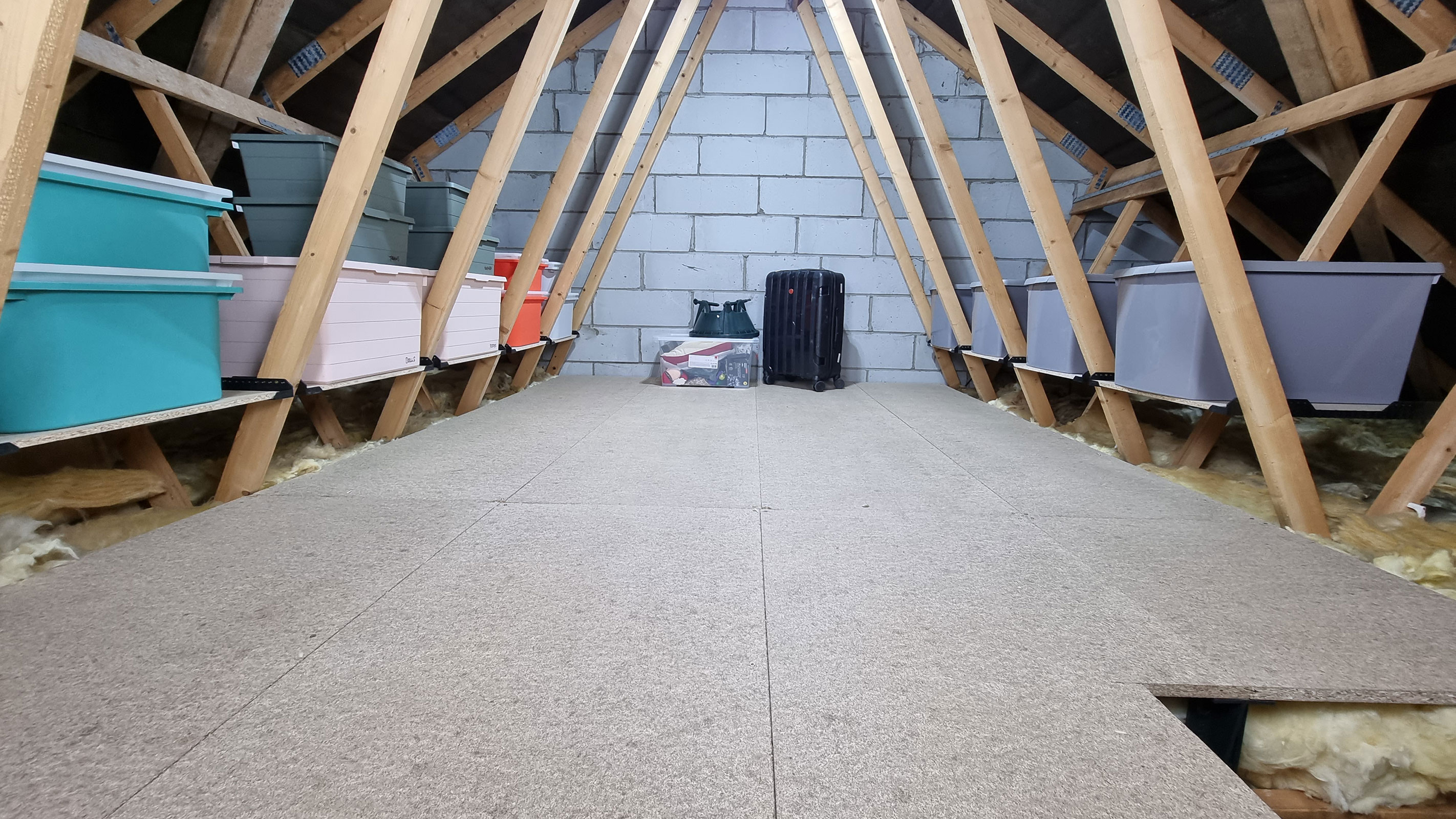
For those who simply want to use their loft as somewhere to store their belongings as opposed to an extra habitable room there are also some really clever ways to make the best use of the space.
Rather than just ramming in boxes and bags and hoping for the best – something which can compromise or damage insulation – look for smarter solutions.
Loft Leg flooring creates a raised loft floor that sits above 270mm of quilt insulation. This avoids any issues with compressing the insulation and gives you a floor that is strong enough to walk on and store up to 25Kg per square metre (although you will obviously need to have the loading limit of your existing ceiling assessed too.) According to Loft Leg: "Thermal studies have shown that compressing your insulation can reduce its thermal properties by more than 50%," which means by using a system such as this you could save both energy and money.
4. Build out a handy storage shelf
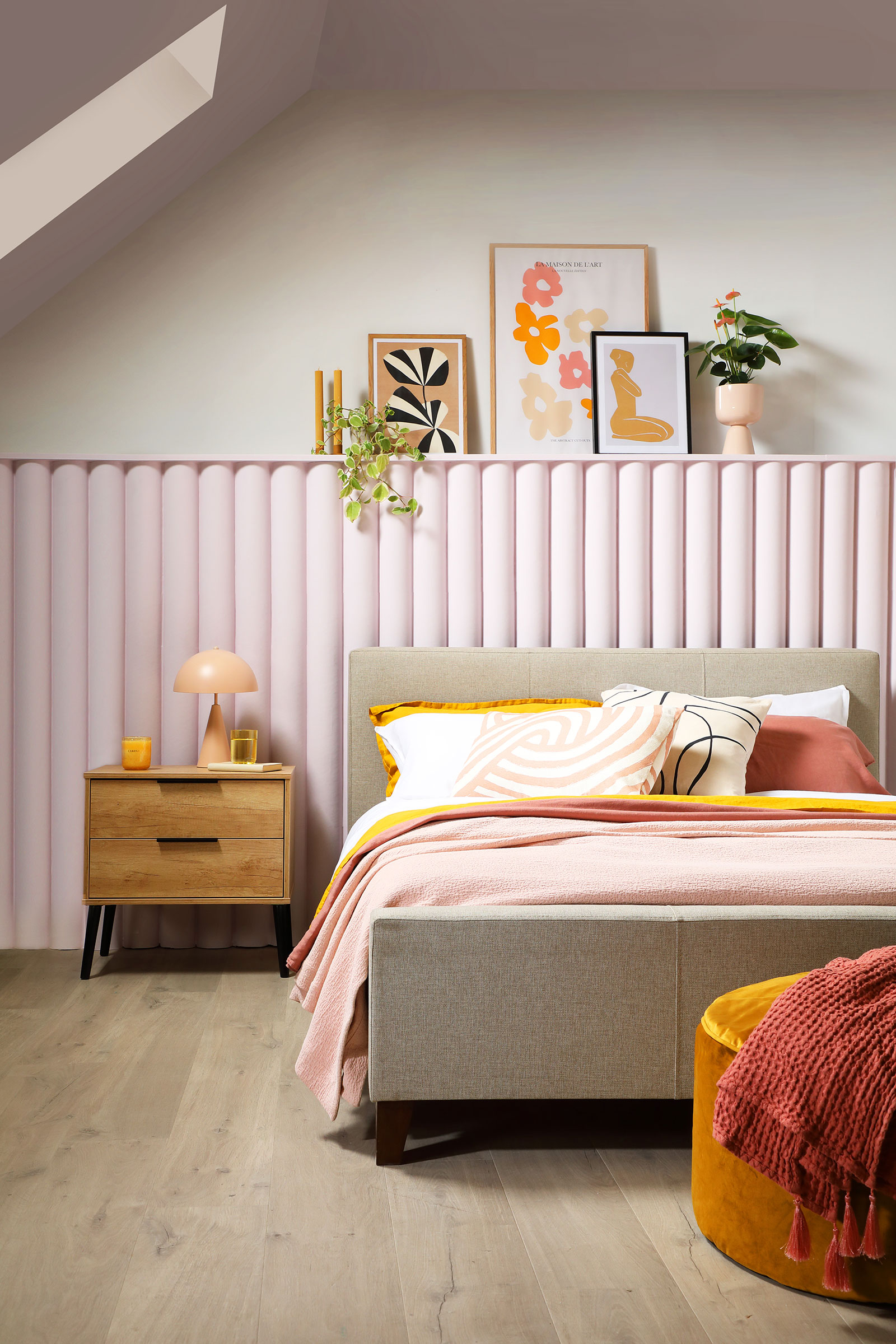
In loft conversions, every inch of space counts so make the most of your new room by building in storage wherever you can.
A really stylish yet practical idea is to use some half wall panelling ideas within the space to provide a handy shelf on which to keep books and decorative objects — a great one for bedrooms, home offices and even bathroom loft conversions where the shelf can be used to house pots and bottles.
In this pretty bedroom the fluted wall panelling has been painted a sweet pastel pink for a restful feel.
5. Keep items clean and dry with storage boxes
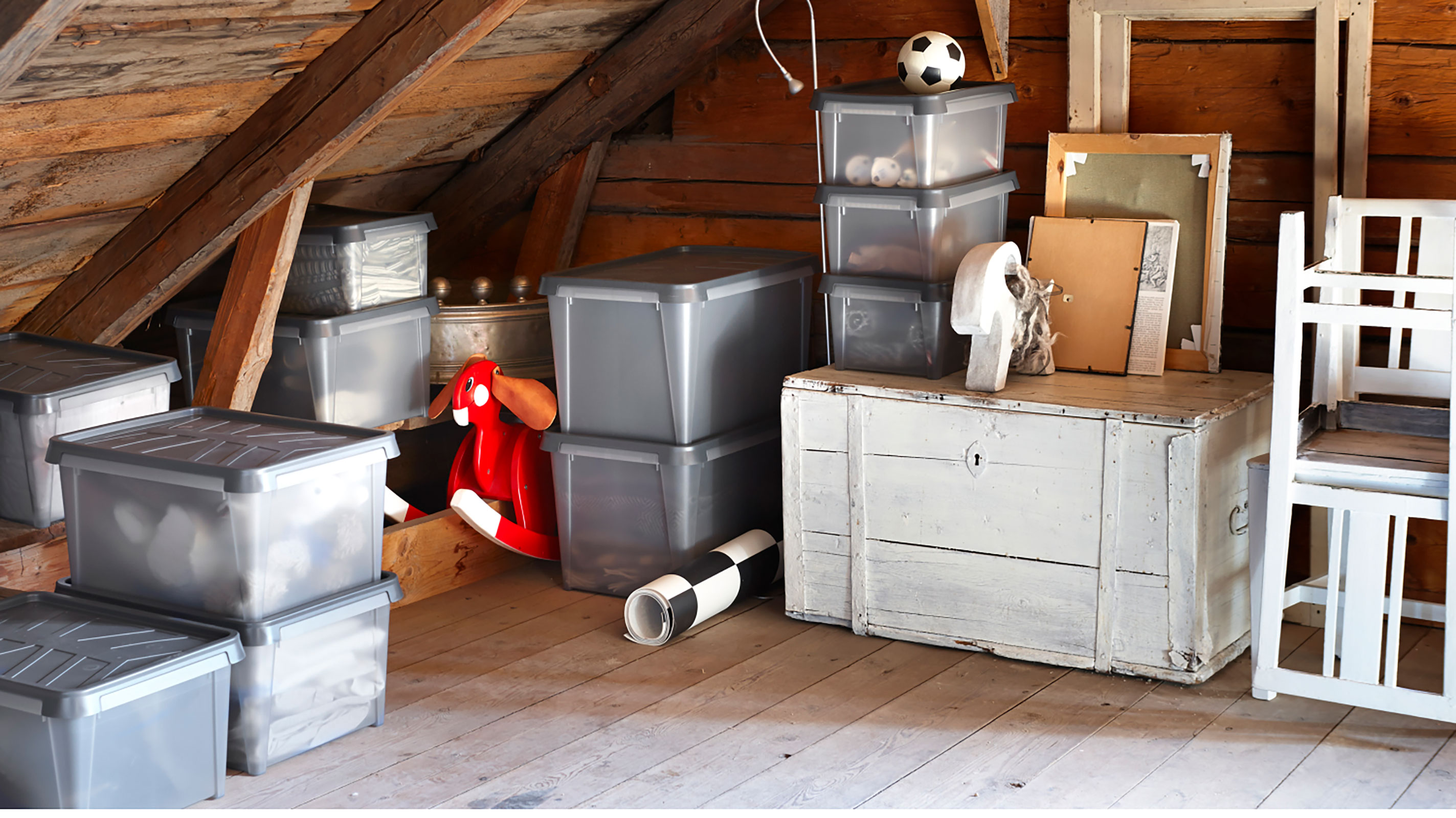
If you plan on using your loft as a space to store you precious belongings that you don't need access to on a day-to-day basis, then you must ensure the containers you keep them are up to the job of keeping out moisture, dirt and dust and are strong enough to withstand being stacked on top of one another too. Relying on old carrier bags and cardboard boxes just won't provide the protection require long-term.
ORTHEX SmartStore Dry stackable water-resistant storage boxes are completely watertight and can withstand temperatures from -40°C to 70°C.
6. Combine storage with a room divider
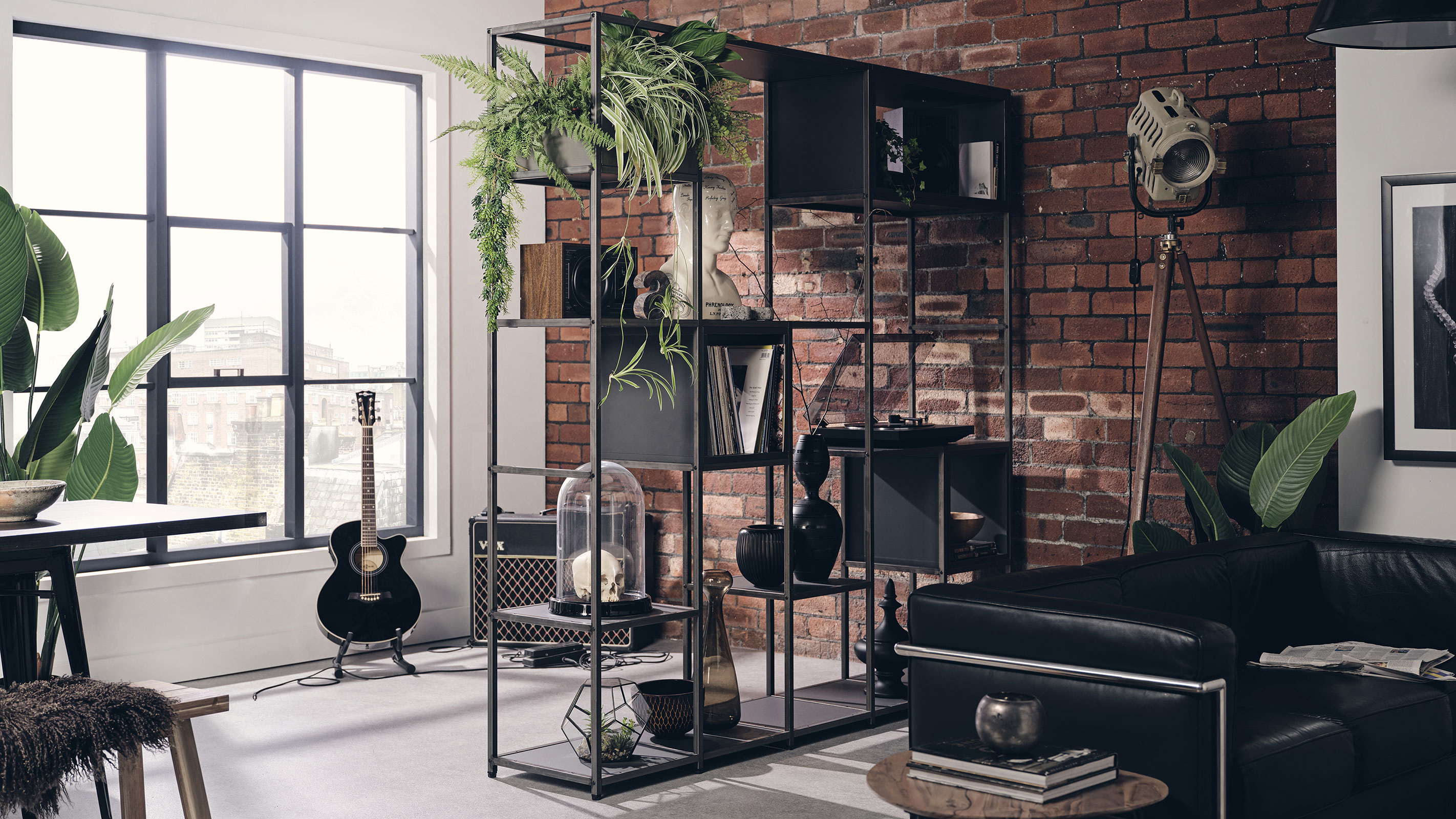
Room divider ideas that combine storage solutions are a fantastic idea for those after extra spots to keep their belongings in order and the space clutter free. Not only do they house all those items that need somewhere to live, but they can also be a great way to break an open loft space up into zones.
This Modular Industrial Style Shelf Unit from Shelved combines useful shelving at the same time as working as a divide that will allow light to flow from one space to another.
7. Select freestanding storage furniture carefully
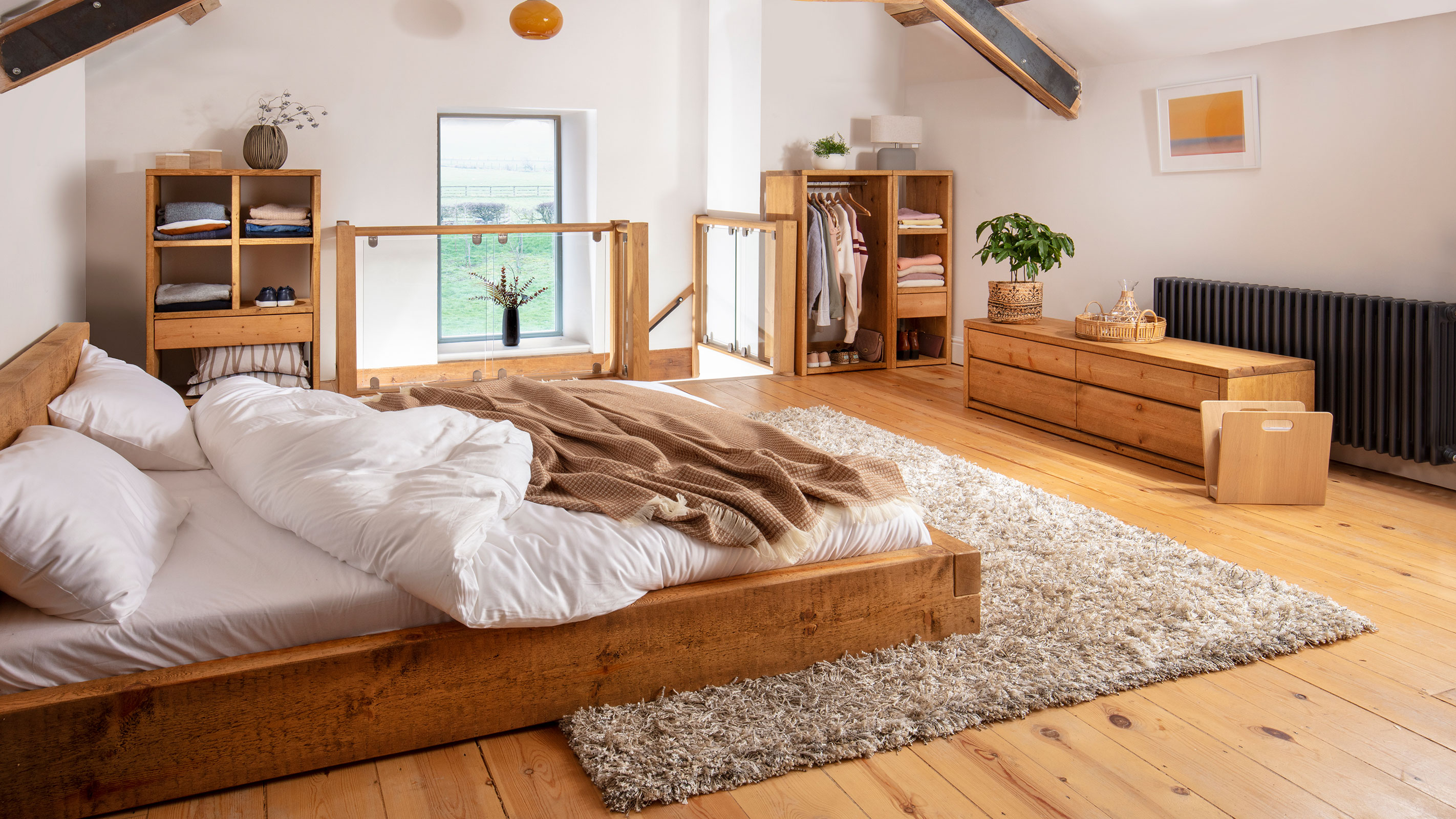
You might decide that you simply like the idea of buying furniture for your loft that can provide storage for those items you need — and this is fine providing you bear in mind the proportions of the space when selecting items.
In loft conversions with low ceilings you need to be particularly careful when it comes to your choice of furniture — you want to be on the look out for low, yet fairly chunky items to match — those that can still provide plenty of useful storage without taking the space over visually.
Here, the The Pandon low wooden bed from Funky Chunky Furniture Cohas been paired with other pieces from the range.
8. Put every available inch to good use
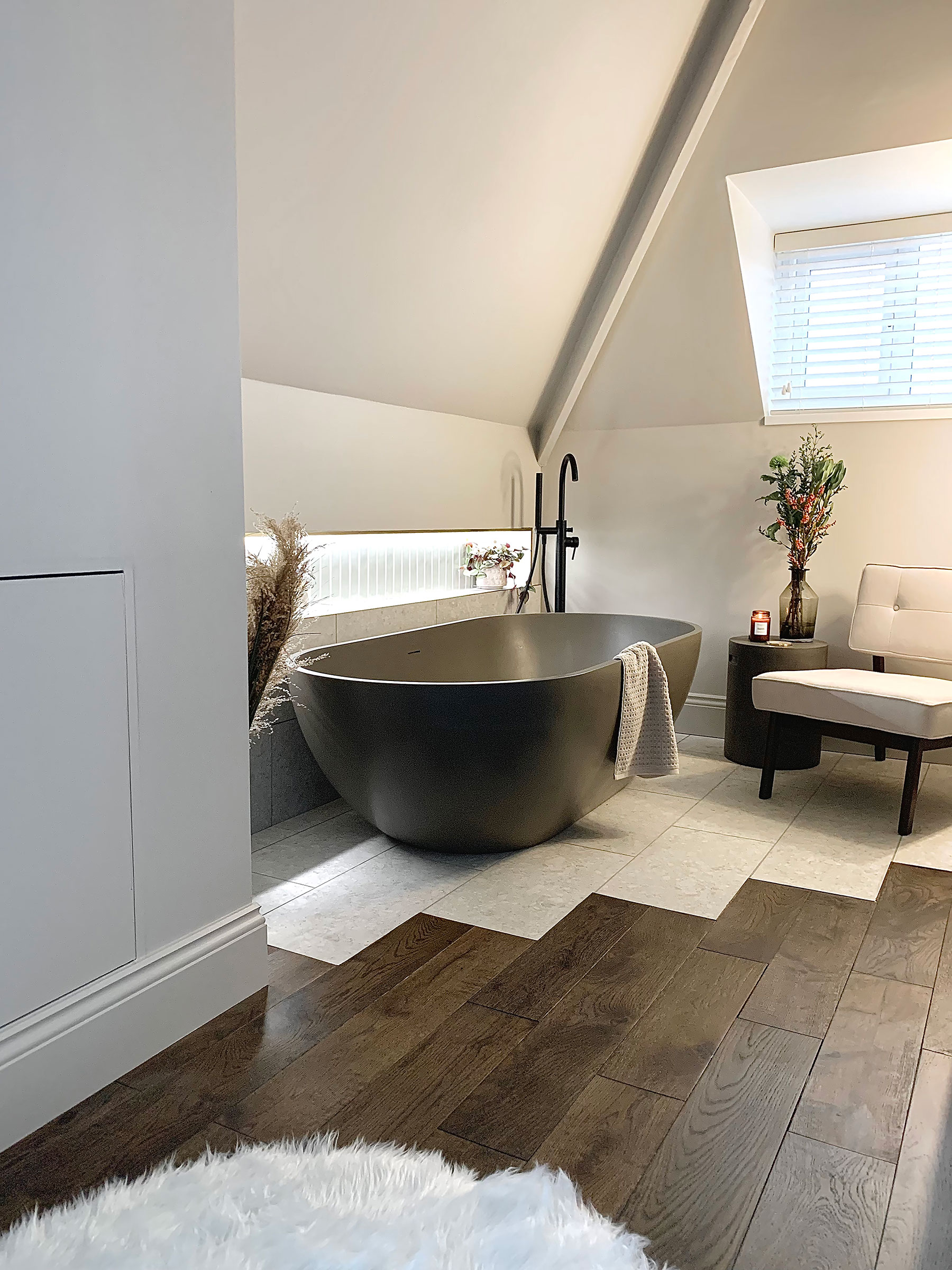
Loft conversion bathrooms can be tricky to get right but that is not to say that they can't be be a huge success and a really useful feature when extending upwards.
The layout of a bathroom loft needs to be given extra careful consideration if this is a space to be enjoyed. Placing the bath under the eaves and locating the shower at the highest point of the room is a great idea, as is building in storage into the eaves. Here, another clever trick has been employed — an alcove has been created in the wall that runs alongside the bath, creating a handy spot for lotions and potions — plus the hidden light source adds a calming ambience.
9. Incorporate bespoke built-in furniture
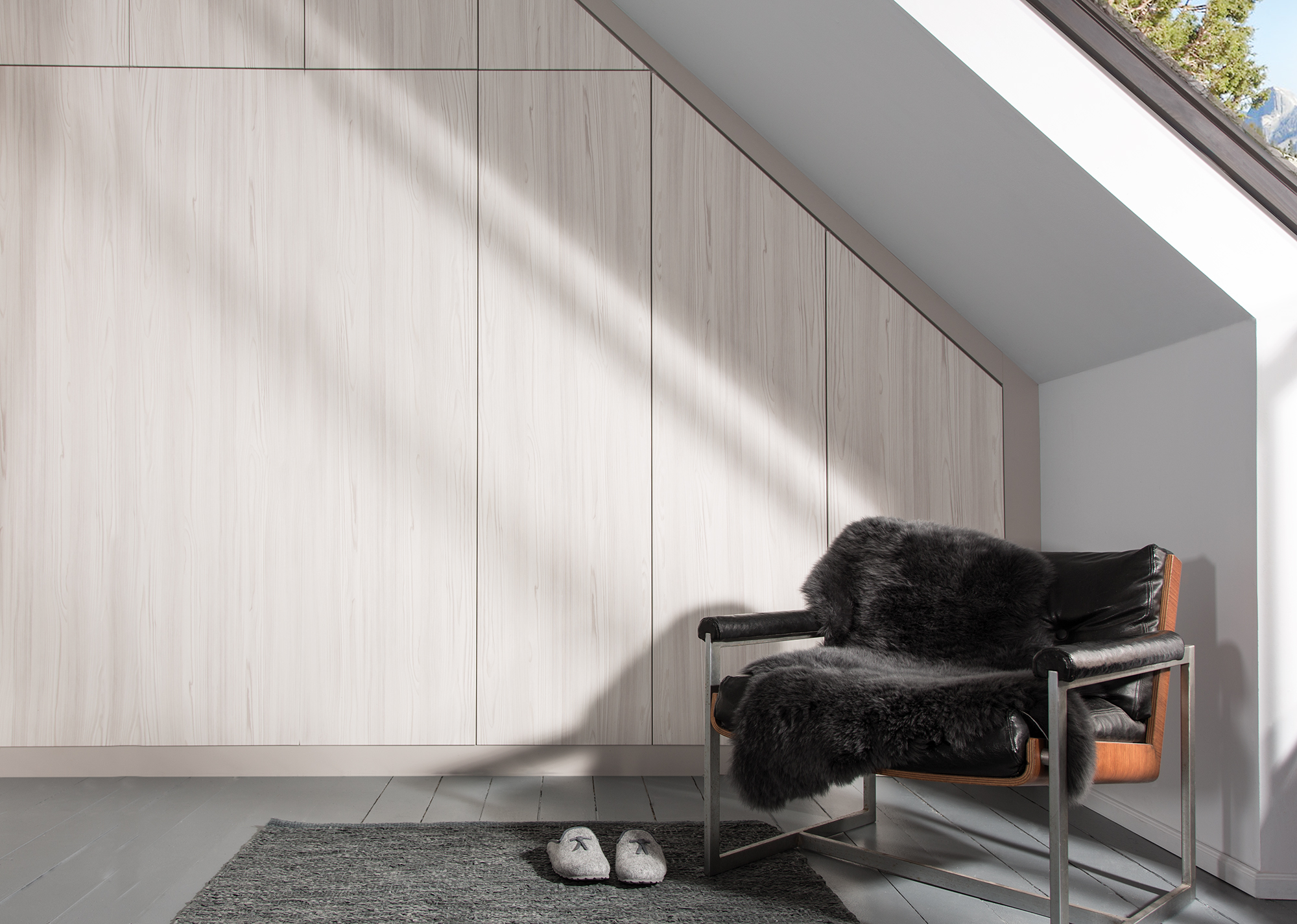
Using standard furniture, especially wardrobes, in your loft conversion can leave you with lots of wasted space. Make the most of every inch by opting for made-to-measure designs that will not only look great, but maximise the storage capacity.
As well as bespoke wardrobe solutions that work well with angled ceilings, you can also build storage into the eaves. Consider sliding doors if you want to keep the storage space unobtrusive.
Speak to your designer about opportunities for built-in storage early in the design stage so that it can be planned in effectively.
10. Look for affordable alternatives to built-in furniture
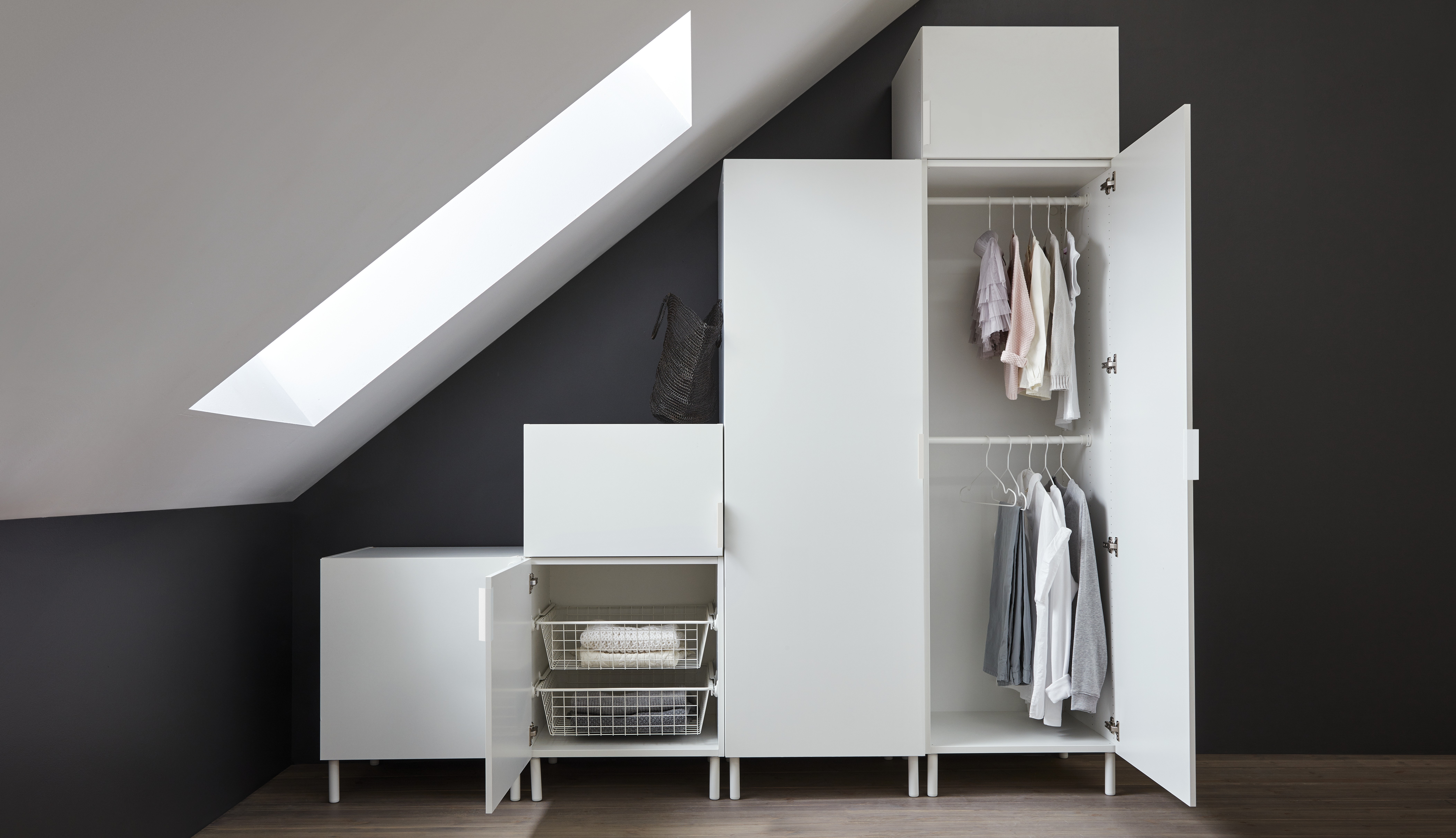
While bespoke, made-to-measure furniture is a worthwhile investment, there are more cost-effective solutions available for those on a tight budget.
Freestanding units, such as this one from IKEA, work well under sloping ceilings and can offer various types of storage - hanging space, drawers and shelves - all in one.
11. Use a wall of shelving in home offices
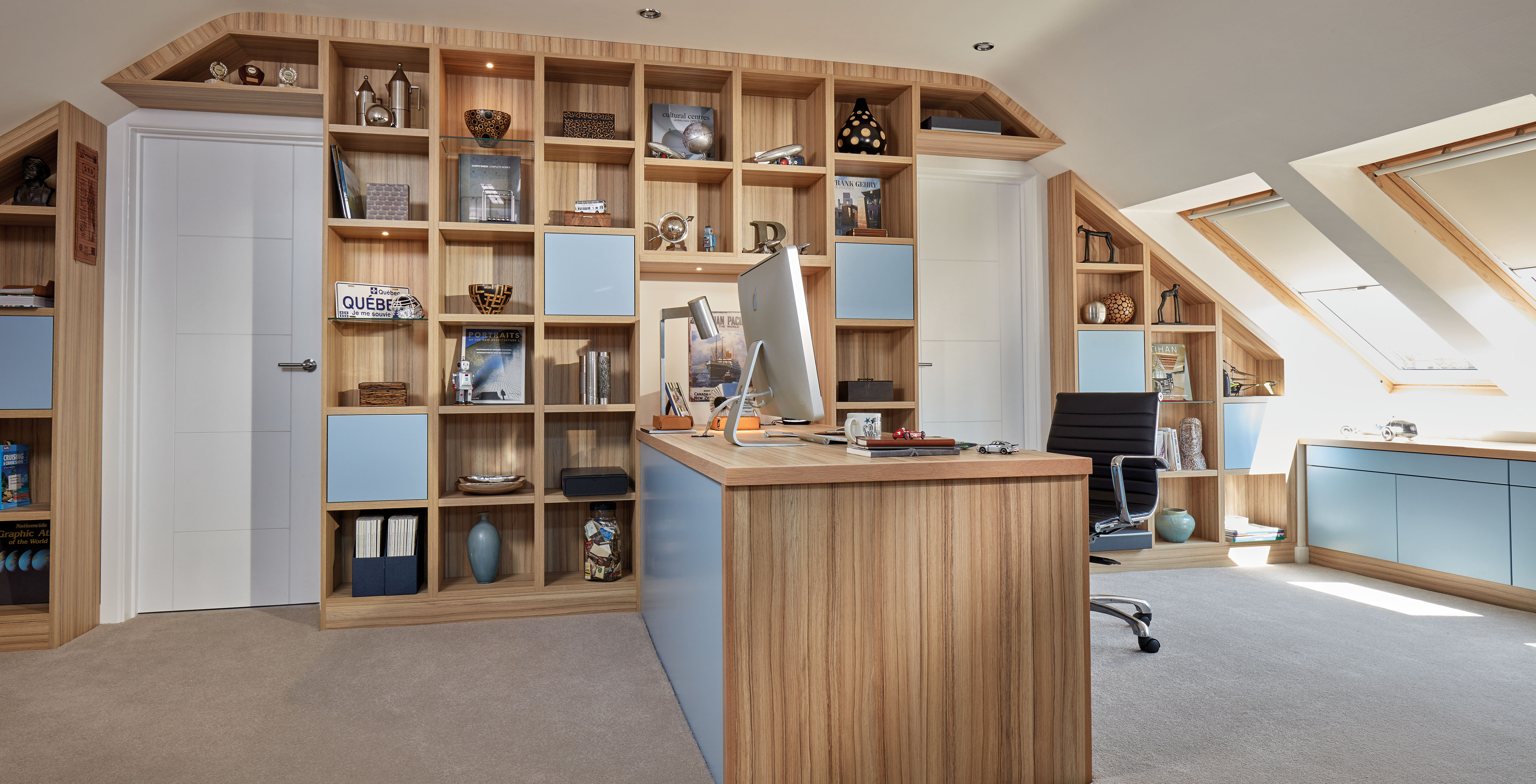
If you've converted your loft into a home office, adequate storage is essential to keep your workspace clear and organised.
Devote an entire wall to storing your essentials — a mix of open and closed storage is a great idea.
Opting for a bespoke design that includes a desk and eaves storage keeps the scheme both cohesive and stylish.
12. Turn your loft storage into a feature wall
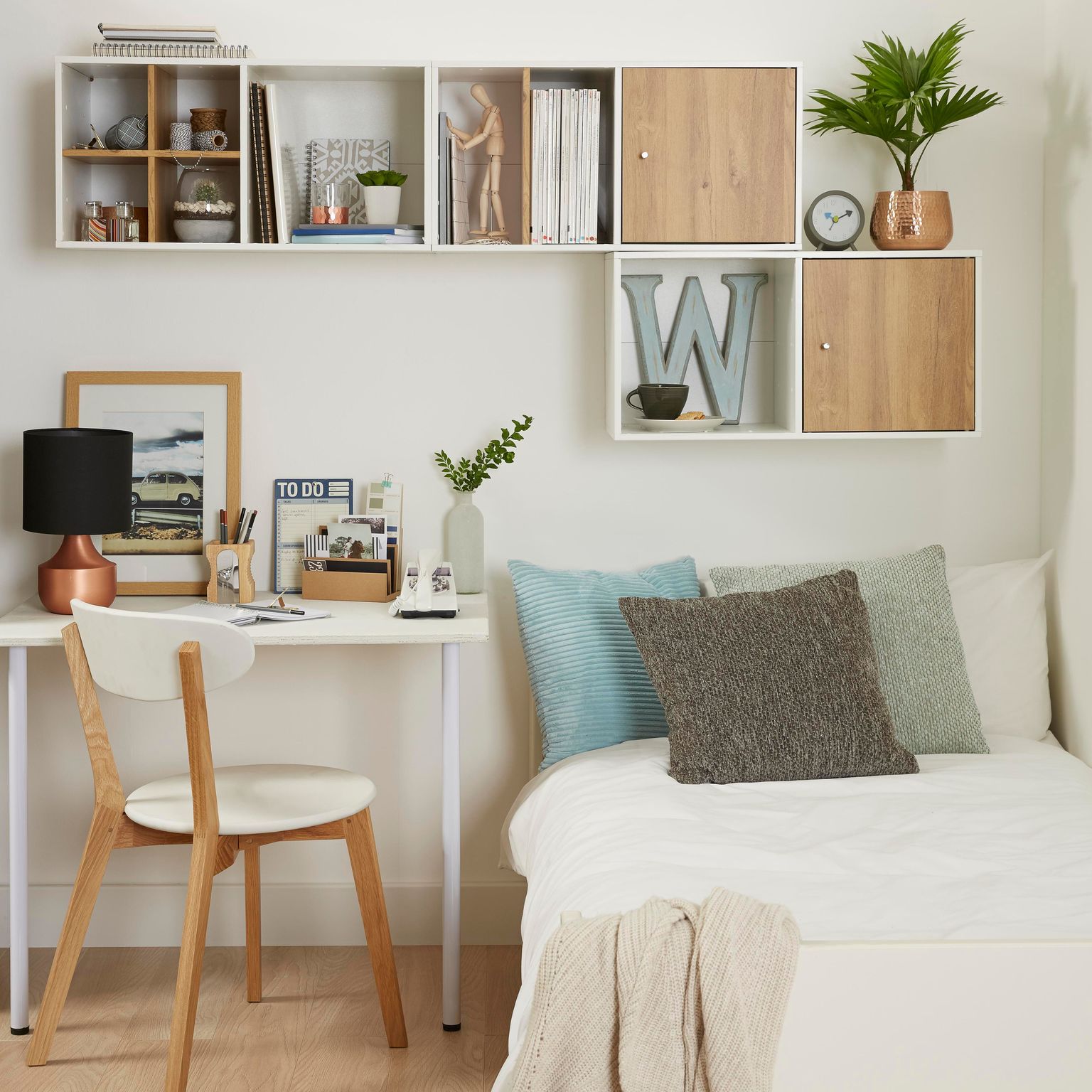
If devoting a whole wall to storage is more than you need, then utilising floating shelves is a great solution that is not only practical, but can also create a stylish feature wall.
It's best to use this type of storage to show off pictures, books or collectibles, rather than more practical items like clothes, to keep it looking neat.
13. Invest in a storage bed
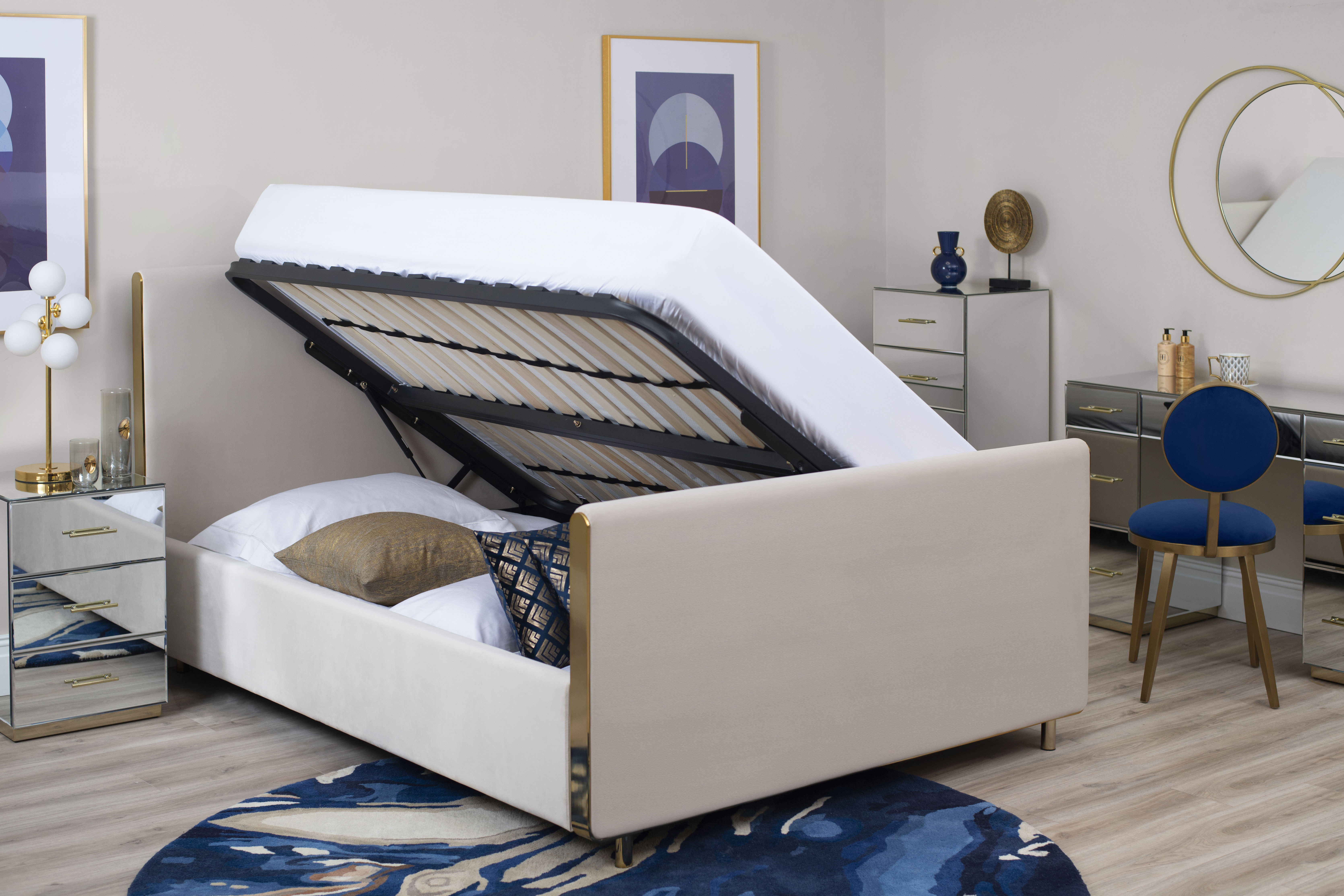
If you will use your converted loft as a bedroom, then it makes sense for your bed to do some of the storage work for you.
You can buy plastic storage drawers on wheels that can be slotted beneath a bed frame which is a cost-effective option. But to keep the storage completely hidden, opt for a bed with built-in storage.
Ottoman beds and storage beds both offer plentiful storage space and are great solutions for compact rooms.
14. Be smart about your freestanding furniture choices
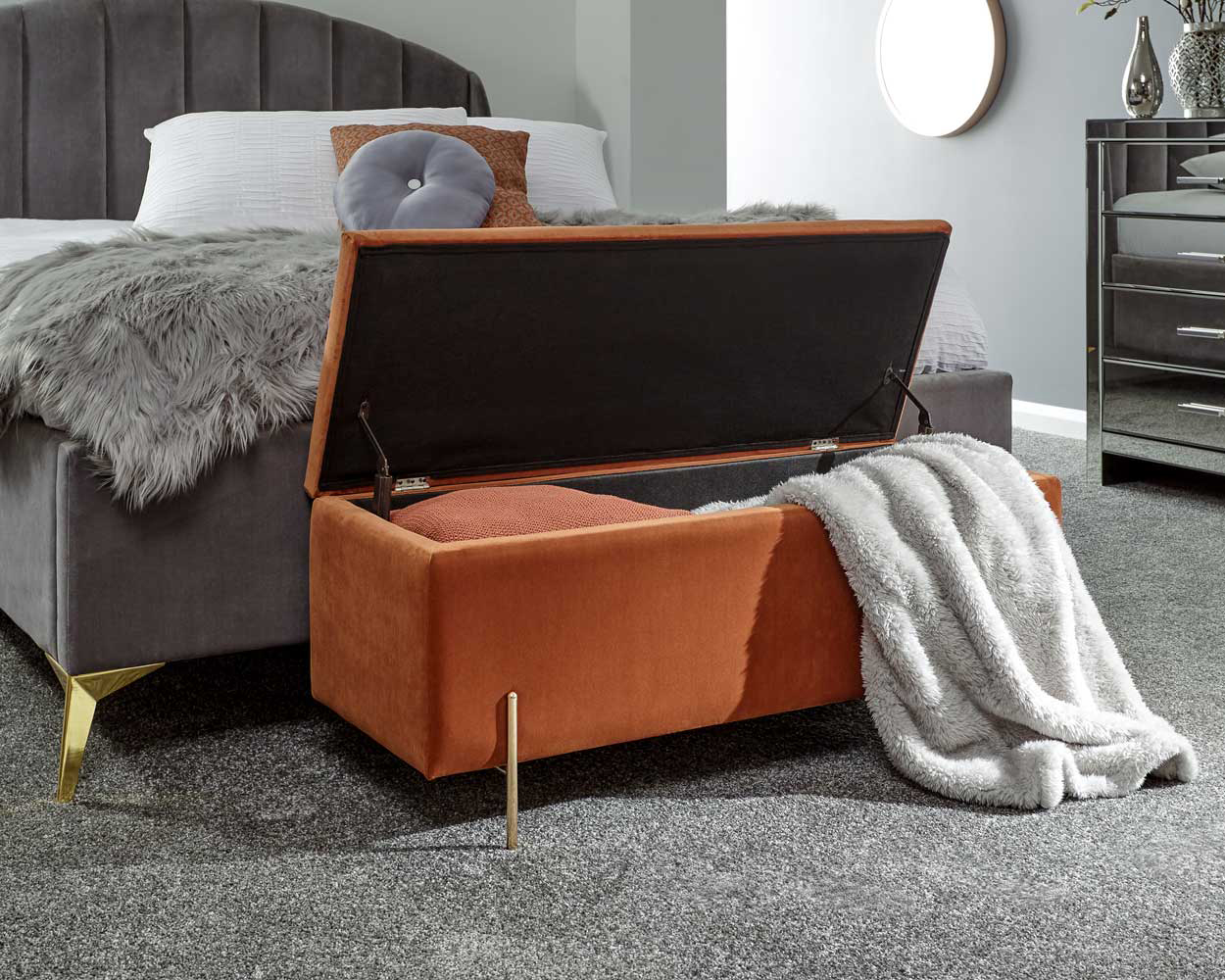
Dual-purpose freestanding furniture is ideal for a converted loft. Benches, seats and beds with integrated storage make really efficient use of the space and are a great way to avoid clutter.
As an alternative to built-in eaves storage, low-height units are perfect for lofts as they can sit neatly beneath a sloping ceiling.
15. Use fitted bathroom furniture in small loft en suites
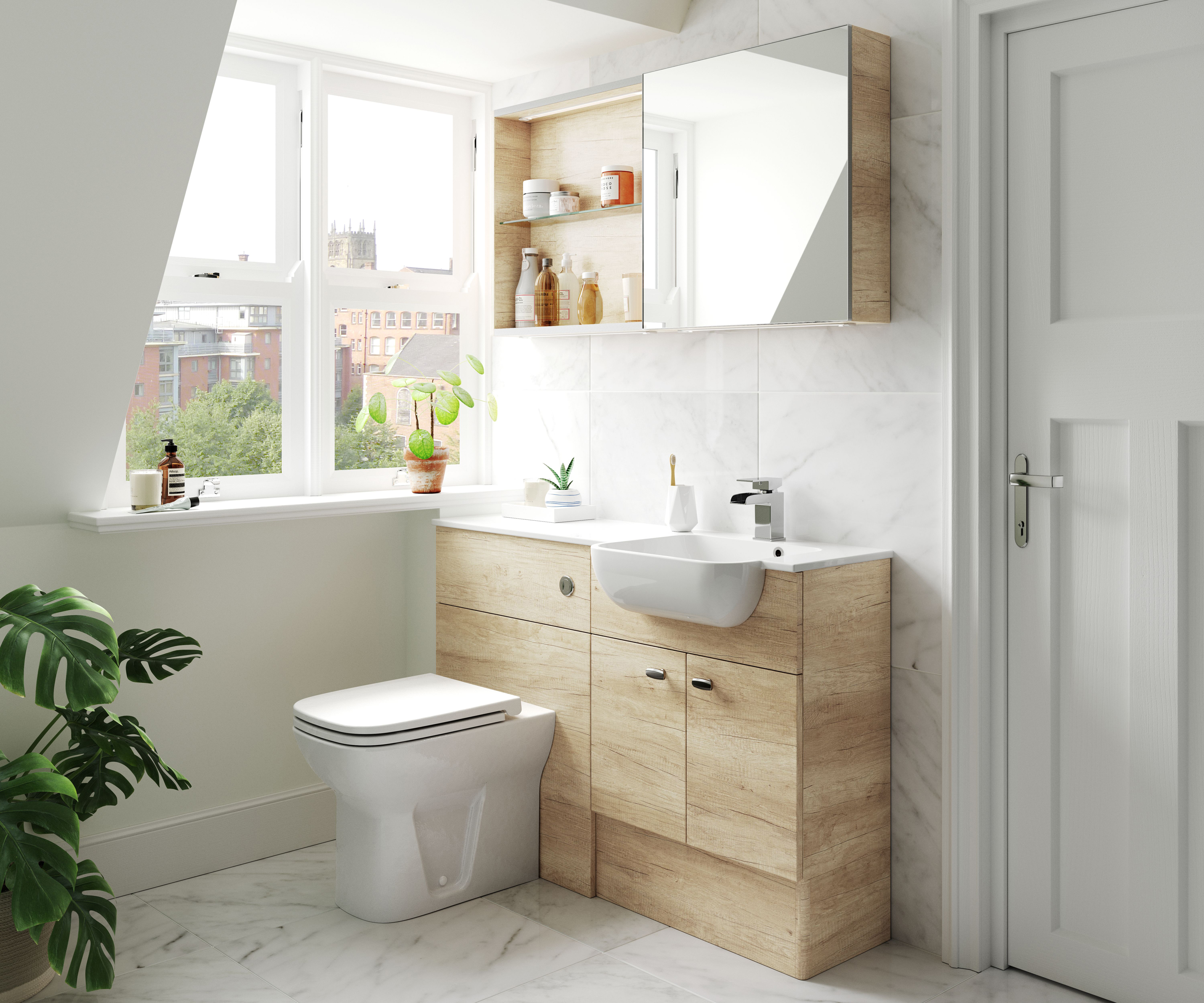
Whether you've created a master suite in your loft or have added a bathroom to compensate for an extra bedroom, then it makes sense to add some clever storage solutions in there too.
Vanity units and mirrored bathroom cabinets keep the space practical and stylish, while offering ample storage for toiletries.
16. Use the corners of the room too
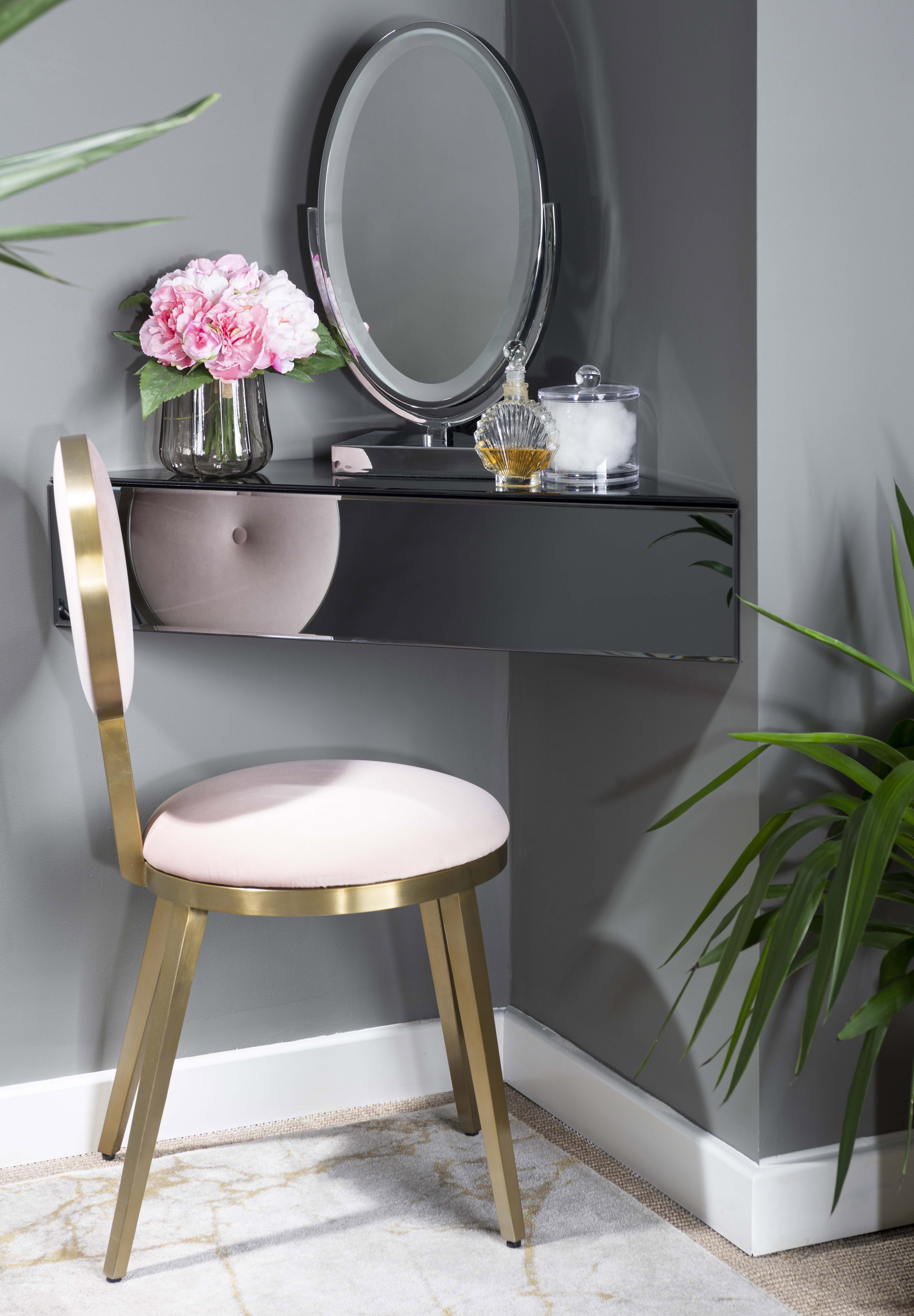
As previously mentioned, when it comes to getting the very most out of your newly converted loft, it really does pay to ensure you are using every inch of available space.
Corner units and shelves are a brilliant idea in this kind of space and can be bespoke or purchased off-the-shelf — consider this for bedside tables, desks, dressing areas and even full-height shelving.
Q&A
How much head space does a loft conversion require?
Many people ask the question 'is my loft suitable for conversion?' The answer to this largely comes down to head height and the amount you have available.
"The main ‘pinch-point’ with loft conversions can be summed up in a single word — headroom," says Chartered surveyor Ian Rock. "To see whether your loft makes the grade, simply stand under the highest point of the roof, usually in the centre of the loft, and check whether there is at least 2.8m clear vertical space.
"This may sound overly ambitious, but the available space will shrink once the new floor structure is constructed and the rafters are lined with thick layers of insulation. If your loft passes this test, you’re off to a flying start."
Do I have to board my loft?
Wondering how to board a loft? If you want to use your loft for storage this is a job that will need carrying out.
"By learning how to board a loft, you can not only drastically increase the storage potential of your loft, but also make it safer and more stable to move around in," explains DIY expert Ben Field. "This is especially useful if you are short of storage space in your home – the loft is often completely underused, so if you’re not planning on turning it into habitable space with a loft conversion, then adding loft boards and using it for effective storage can be a great solution."
Get the Homebuilding & Renovating Newsletter
Bring your dream home to life with expert advice, how to guides and design inspiration. Sign up for our newsletter and get two free tickets to a Homebuilding & Renovating Show near you.
Natasha was Homebuilding & Renovating’s Associate Content Editor and was a member of the Homebuilding team for over two decades. In her role on Homebuilding & Renovating she imparted her knowledge on a wide range of renovation topics, from window condensation to renovating bathrooms, to removing walls and adding an extension. She continues to write for Homebuilding on these topics, and more. An experienced journalist and renovation expert, she also writes for a number of other homes titles, including Homes & Gardens and Ideal Homes. Over the years Natasha has renovated and carried out a side extension to a Victorian terrace. She is currently living in the rural Edwardian cottage she renovated and extended on a largely DIY basis, living on site for the duration of the project.

